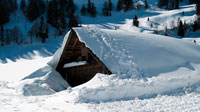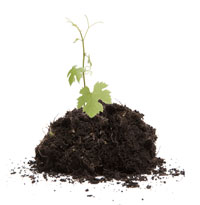Nature

After a week of skiing I still enjoy the impressions of being in nature. The huge alpine mountains contrary to tiny streets and houses down in the sunny valleys. This contrast combined with a change in position let me focus on fundamental experiences of being alive. Reinhold Messner described this motivation for climbing as the two elementary feelings of humans: While climbing up, nature seems to be infinite, huge and untamable. You feel like a speck of dust compared with these dimensions and power, with the risk of being smashed and erased immediately.
But on the top, it is quite vice versa. You feel like God laid down earth to your feet watching all these tiny houses, rivers – an omnipotent king of nature.
With skiing I have to admit, that the latter is dominant. We lift with a cable car in about a quarter of an hour up to 2000m and race down on night-time prepared slopes. OK – I love freeriding, but honestly I am aware that this extraordinary infrastructure hardly can be defined as ‘nature’.
Culture

But even without holidays we are using the terms ‘nature’ and ‘culture’ quite puzzling. We emphasize to run or walk in nature for recreation from our accelerated culture. In fact we move through the fields or forests – areas that are under constrains of economical reasoning. Forests are far away of being not created nor managed by humans. The modern idea of sustainability in economics developed out of forestry 150 years ago with the problem of the optimal crop rate (s. Faustmann M.; 1849; Berechnung des Werthes, welchen Waldboden, sowie noch nicht haubare Holzbestände für die Waldwirthschaft besitzen; Allgemeine Forst- Jagdzeitung; 25; p.441-455). And modern agricultural production is highly industrialized – contrarily to ‘not created by man’.
And even the origin of the word ‘culture’ is problematic to our semantical understanding of it. The etymological context of ‘culture’ comes from the Latin expression ‘cultura’ as tilled place. And it is obvious that cultured land is different to uncultured acres, but still there is an impact of nature, setting the range of quality of a field.
And this differentiation of ‘nature’ and ‘culture’ is not only problematic to space and our handling of it. For deeper insights you may read the paper: “Taming Savage Design” (s. Deuker, C.; 2016; “Taming Savage Design. Methodological Implications on Wildlife-Biological Design Planning” ScienceSocial.net; ISSN 2366-0104; S2n16-04-01).
But it is also problematic to our understanding of identity.
Images:
Skihuette: by dundotcan
junge Rebe: Fotolia_43168971 by studio